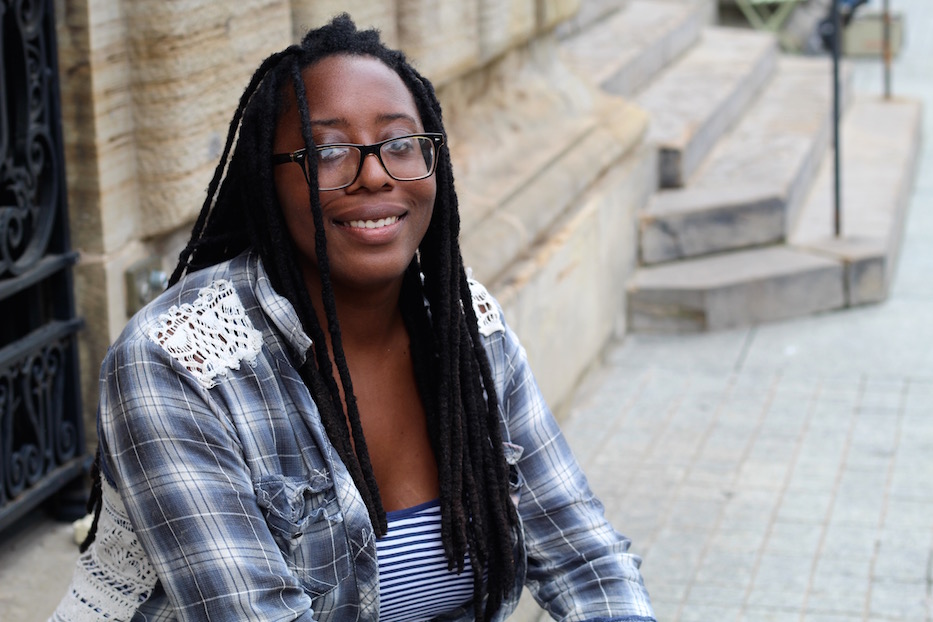
Arts & Culture | COVID-19 | Palestine | Bailout Gallery
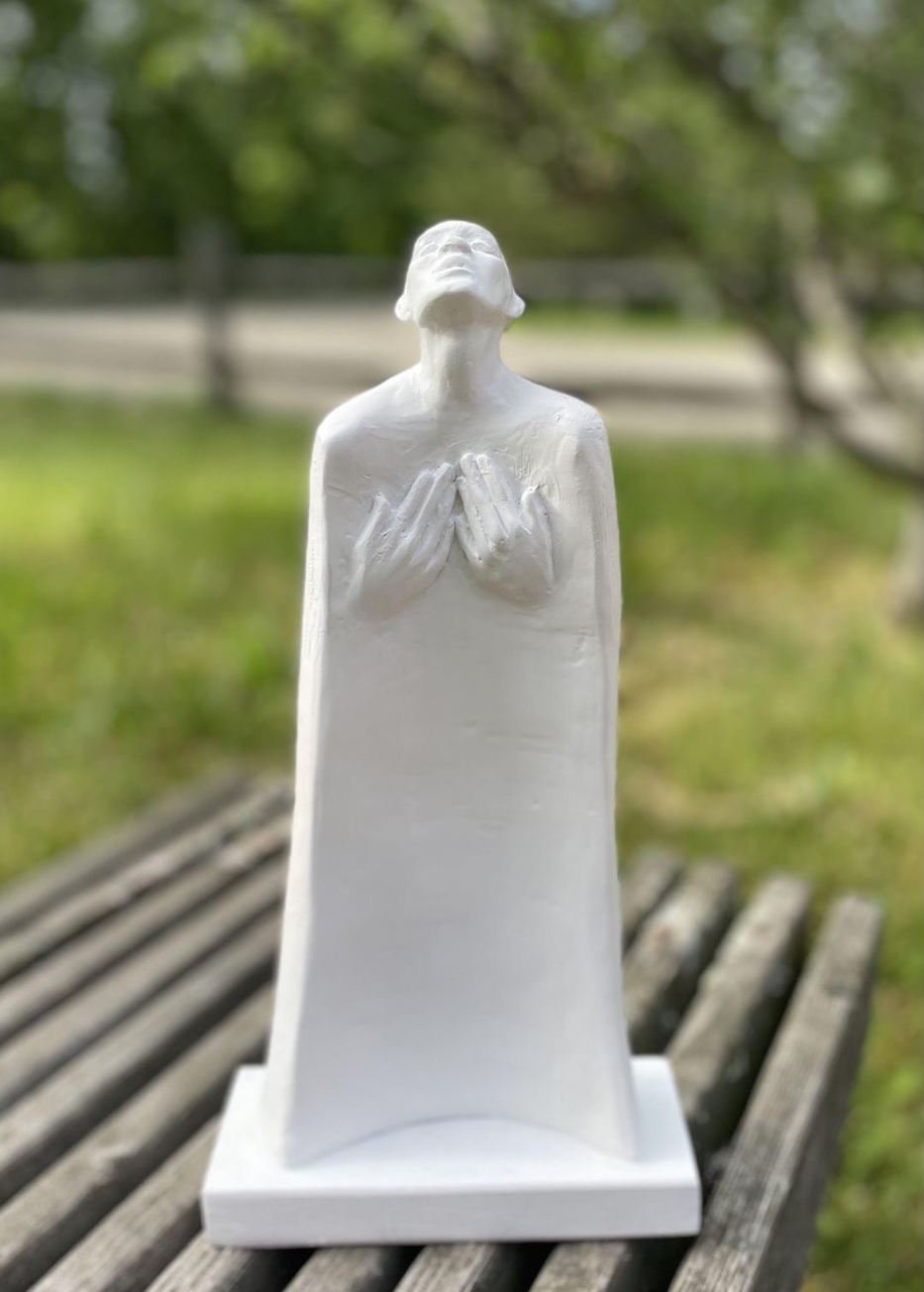
Susan Clinard's Lamentation. Susan Clinard for Bailout Gallery Photo.
The figure lifts their head to the sky, hands clasped at the chest as their lips fall open in a cry. Their fingers are long, cheeks drawn back. Their body is a solid block, as if their limbs have frozen and congealed in place. Eyelids flutter, suspended somewhere between this realm and the next. Around the sculpture, the mere presence of wind becomes a scream.
An ocean away in Sheikh Jarrah and Silwan, Palestinian families are being evicted from their land. They are documenting the erasure of their neighborhoods and watching the names of their streets disappear. Others are mourning their dead and clearing rubble in Gaza. The figure seems to cry out for them.
Susan Clinard’s Lamentation is part of a relaunched Bailout Gallery, a social justice-themed art gallery raising funds for Palestine. The brainchild of 27-year-old artist Amira Brown, the gallery first launched last summer to raise funds to bail Black Lives Matter protesters out of jail. This year, Brown brought it back to support Build Palestine, a nonprofit that connects donors across the globe with grassroots activists, artists, organizers, and project leaders in Palestine.
It includes over a dozen artists from across the state and the country, all of whom have donated work to the cause. The artist is based in the city’s Amity neighborhood. All proceeds from the gallery go directly to Build Palestine.
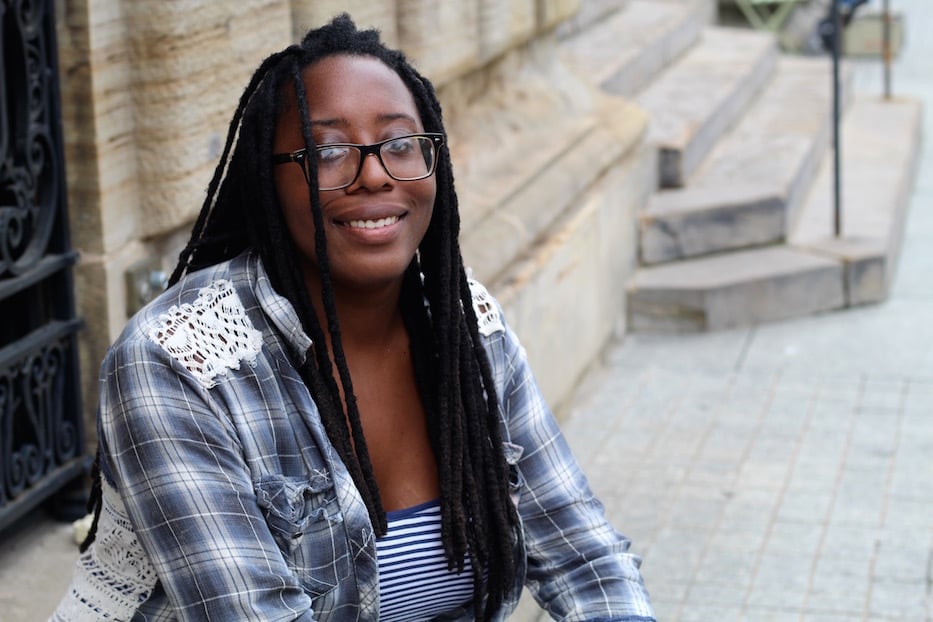
Brown in downtown New Haven. Lucy Gellman Photo.
“When I first learned about it [Palestine] in college, I didn’t know that we were backing the occupation,” Brown said in an interview downtown Thursday morning. “I didn’t know how complicit we were. Like, what are you doing telling people it’s okay to settle where people already are? It’s the same kind of tactics that they use for Black people here.”
Brown’s support of Palestine began when they were a freshman at Paier College of Art in 2012. At the time, he was in his early twenties, and started reading articles about Israel-Palestine relations on Tumblr. That year, the United Nations voted to make Palestine a “Non-Member Observer State,” in what seemed like a move toward statehood.
Brown, meanwhile, read through articles about Gaza, settler-colonialism, World War Two and the history of Zionism itself. They learned that Israeli-Palestinian tensions weren’t decades old, but included centuries of invasion and occupation by Ottoman, British, Jordanian and Israeli forces.
The more she learned about U.S. military involvement, the more frustrated they got. He saw parallels between the Israeli occupation and patterns of redlining, eminent domain, and the forced displacement of Black and Indigenous people in the U.S. They sought out “so many voices that would not have been seen” in the mainstream media, he said. Those included Palestinian artists and activists who were working and writing on the ground.
“I was just like, this doesn’t make sense,” they recalled.
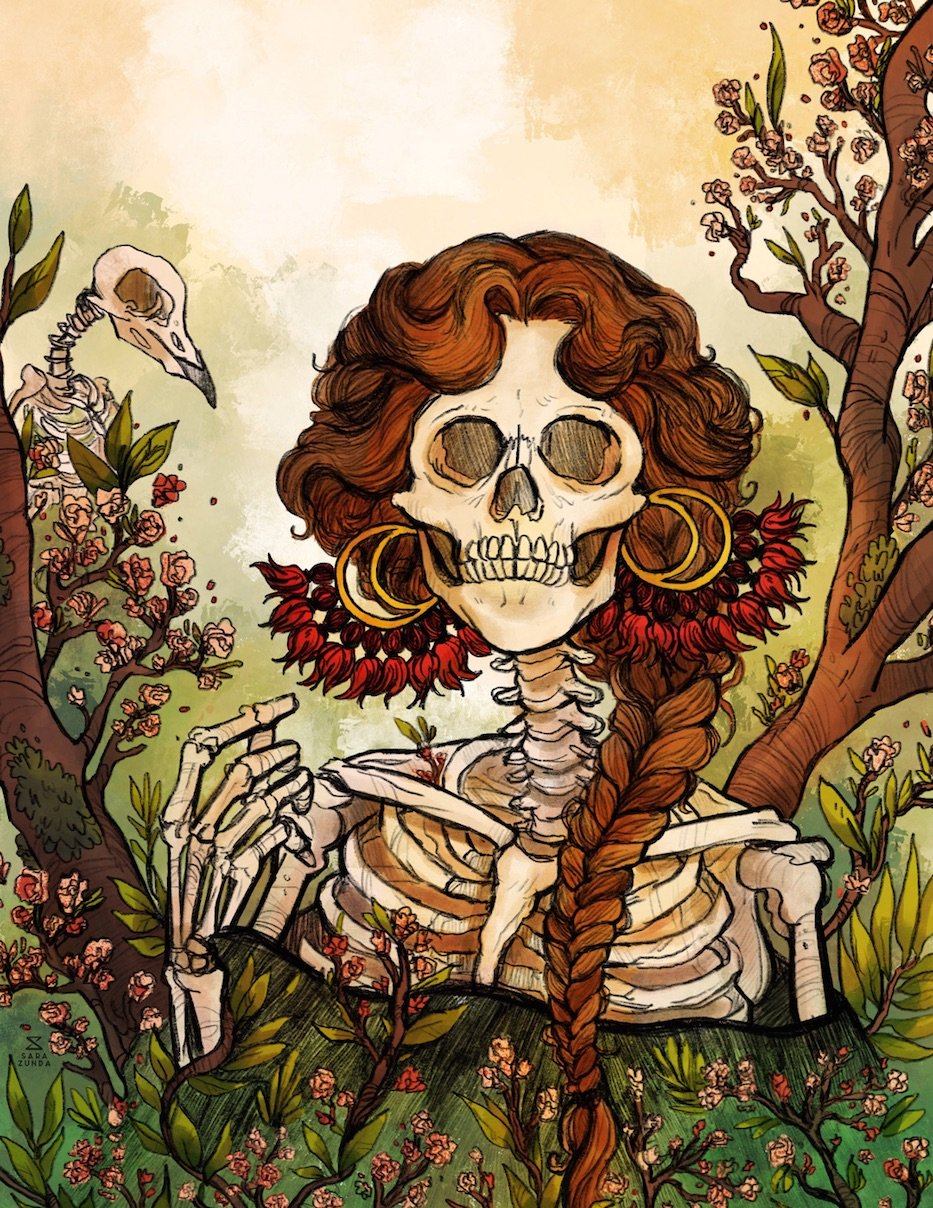
Sarah Zunda's Enraptured. Sarah Zunda for Bailout Gallery Photo.
Brown wasn’t sure where to put that activism until an opportunity arose this year. Last year, she launched Bailout Gallery in the midst of a summer roiled by the twin pandemics of Covid-19 and entrenched racism. The gallery allowed him to yoke their love for New Haven artists and support of protesters who filled the streets to decry the state-sanctioned murders of George Floyd, Breonna Taylor, Ahmaud Arbery, Tony McDade, and hundreds of others taken by police brutality. It ultimately supported the Pimento Relief Fund, Black Visions, Liberty Fund and Connecticut Bail Fund.
This year, a friend asked him if they planned to bring the gallery back. She had already been thinking about it, but was hesitant to support the same causes again after allegations of exploitation within the Black Lives Matter movement. In mid-March of this year, mothers Samaria Rice and Lisa Simpson, both of whom lost their sons to police brutality, accused prominent social justice leaders of profiting off the names and stories of their slain children.
Brown, who attended a protest last year, recalled hearing those names chanted and not knowing how to feel about it. She referred to "necrophilia politics" or "necropolitics," a term coined by Achille Mbembe and passed on by her friend Damiana, in which there is a love for and dedication to a cause only when it involves the spectacle of death.
Then this spring, they watched as Israeli forces conducted a raid on Al-Aqsa Mosque in Jerusalem during the final days of Ramadan. He read about the proposed eviction of Palestinian families in the Sheikh Jarrah neighborhood of East Jerusalem, and wider attempts at ethnic cleansing from both the Israeli government and far right-wing Zionist groups.
When days of seemingly endless rocket fire followed, she found their next cause. Bailout Gallery launched in the midst of violence that killed 13 Israelis and over 250 Palestinians, including almost five dozen young children. Brown said that while some New Haveners may march, rally, or donate directly to a cause, the gallery is their form of protest.
“At what point are you like, what’s the goal of all this?” he said. “As an American, I know that my tax dollars are funding that. And then when the ceasefire happened, I feel like people stopped paying attention.”
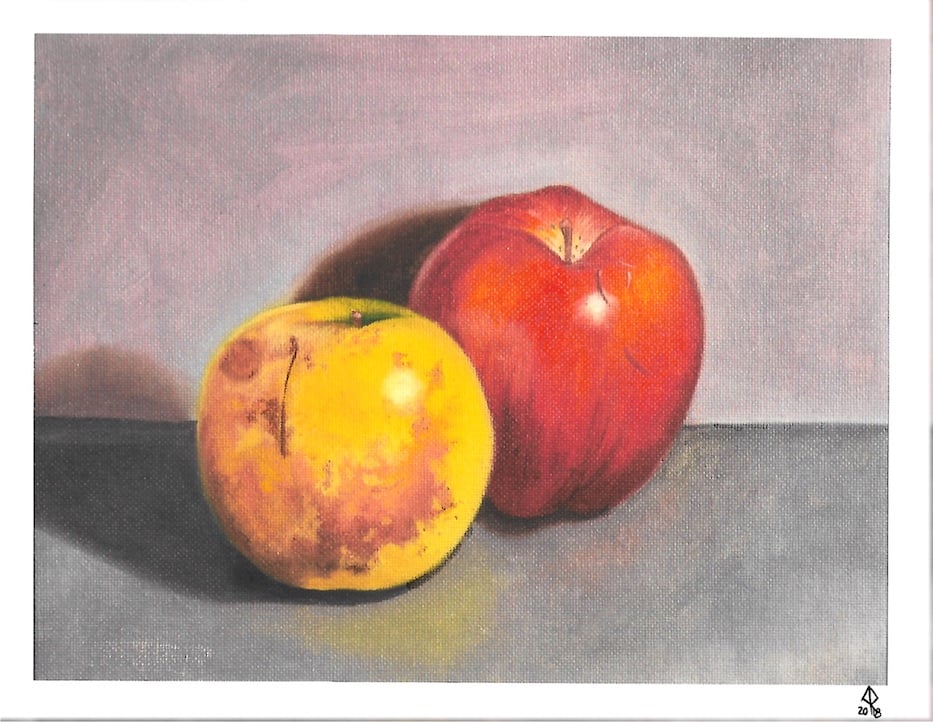
Amanda Rodriguez' Apples. Amanda Rodriguez for Bailout Gallery Photo.
So far, the gallery has been comparatively “slow going,” Brown said. This year, 16 artists signed up to offer work instead of the 40 that volunteered last year. In the weeks that the gallery has been open, only three pieces have sold. She attributes the shift to the fact that the pandemic is in a very different place than it was a year ago, and so is the fight for racial and social justice. And yet, they said, he hopes that people find an urgency to both.
In the gallery, multimedia works fill the screen in neat rows, waiting to find new homes. Aly Maderson Quinlog’s sweet Doe Mama finds a place beside Jacquelyn Gleisner’s numbered drawings, works that explode with color. After working with Brown last year through Attack Bear Press, artist and musician Jason Montgomery has returned with Despite A Riot, a collage that includes the words “Indians and babies. And/ground is not calculated.” It makes a viewer aware of relationships—of parents to children, of humans to the land beneath their feet.
In Amanda Rodriguez’ Blurry Face, a woman locks eyes with the viewer, her brows narrowed as her lips part. Hair cascades down her back and shoulders, falling close to her breasts. Her hands and neck are painted the color of charcoal, the black falling over them like a second skin.
Her expression holds many things at once: a pugnacious hello, an ask for assistance, a sense that she’s ready to show the world her personal topography. It’s a through line to her Apples, a still life also on sale that show the bruised, blemished skin of a yellow-green apple waiting on someone’s countertop.
There’s also a reminder to remember and celebrate those who—and that which—has come before. In Sarah Zunda’s Enraptured, a skeleton emerges from the ground, her bones turned the yellow of early-morning sunlight. Her hair is intact, woven into a thick red-brown braid and voluminous and curly around her face. Her red and gold earrings glint out, a cheeky reminder of the material world that can outlive flesh.
The grass rises up around her, as if it has been waiting for this moment, or is getting ready to swallow her back up. Everything around her is lush to the point of feeling magical: trees sprout red and pink blossoms as their trunks catch the sunlight. A skeletal bird appears in the left hand corner.
Brown said they plan to keep the gallery open as works sell more slowly. She is already thinking of next steps to continue the work long-term.
To visit Bailout Gallery, click here.

